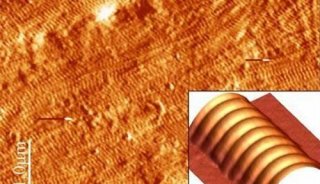AgingCell:延缓皮肤衰老的新策略
最近,加拿大英属哥伦比亚大学(UBC)的一个研究小组,制备了一种转基因小鼠,虽然这些小鼠反复暴露于可产生皱纹的紫外(UV)光,但它们的皮肤较少起皱纹。
这些有着年轻相貌的小鼠,缺乏产生颗粒酶B(Granzyme B)的基因,免疫细胞用这种酶来消灭有害的病原体。由David Granville教授和博士后研究人员Leigh Parkinson带领的UBC CProvidence研究小组发现,颗粒酶B也有害处:当皮肤细胞产生和释放颗粒酶B以响应紫外线时,它会触发胶原蛋白的分解,而胶原蛋白是一种可使皮肤紧致的结构蛋白。
相关研究结果发表在最近的《Aging Cell》,将来有希望开发出一种药物,阻断某些部位的颗粒酶B活性,从而阻止衰老以及依赖于胶原蛋白的组织退化――不仅仅是皮肤,还有血管和肺通道。
UBC病理系和医学实验室教授、UBC和St. Paul医院心肺创新中心首席研究员Granville,专注于研究颗粒酶B在动脉粥状硬化和心脏病中的作用。他和他的研究团队想知道,是否缺乏颗粒酶B的小鼠血管更耐硬化和狭窄――这是人类心脏病发作的主要原因。在此过程中,他们发现这些小鼠保持着年轻的皮肤,而正常小鼠的皮肤却发生了老化。
Granville的研究小组构建了一个实验性的“阳光日晒床”,来刺激小鼠的日光照射。每只小鼠被放置于一个旋转木马中――在UV灯下缓慢转动,使它们每周三次、每次暴露三到四分钟,这足以引起发红,但不发烧。经过20周的反复暴露,很明显,与对照组小鼠相比,缺乏颗粒酶B的小鼠――它们的胶原蛋白更完整,皮肤老化得较慢。
viDA Therapeutics――Granville共同创办的一个公司,目前正在开发一种基于UBC技术许可的颗粒酶B抑制剂。该公司计划两年内在盘状红斑狼疮(一种自身免疫性疾病,日光可加重该病,可导致面部疤痕恶化,音乐家Seal患有这种疾病)患者身上测试一种局部用药。
如果该药物被证明可有效地预防狼疮相关的皮肤病变,就有可能开发一种化妆品,阻止皮肤的正常逐步老化,而皮肤老化主要是由于太阳暴晒引起。此外,该药物也可能用于危及生命的疾病,例如动脉瘤和慢性阻塞性肺病,它们都是由胶原蛋白及其他为血管和肺通道提供结构的蛋白分解而引起。
原文摘要:
Granzyme B mediates both direct and indirect cleavage of extracellular matrix in skin after chronic low-dose ultraviolet light irradiation
Summary: Extracellular matrix (ECM) degradation is a hallmark of many chronic inflammatory diseases that can lead to a loss of function, aging, and disease progression. Ultraviolet light (UV) irradiation from the sun is widely considered as the major cause of visible human skin aging, causing increased inflammation and enhanced ECM degradation. Granzyme B (GzmB), a serine protease that is expressed by a variety of cells, accumulates in the extracellular milieu during chronic inflammation and cleaves a number of ECM proteins. We hypothesized that GzmB contributes to ECM degradation in the skin after UV irradiation through both direct cleavage of ECM proteins and indirectly through the induction of other proteinases. Wild-type and GzmB-knockout mice were repeatedly exposed to minimal erythemal doses of solar-simulated UV irradiation for 20 weeks. GzmB expression was significantly increased in wild-type treated skin compared to nonirradiated controls, colocalizing to keratinocytes and to an increased mast cell population. GzmB deficiency significantly protected against the formation of wrinkles and the loss of dermal collagen density, which was related to the cleavage of decorin, an abundant proteoglycan involved in collagen fibrillogenesis and integrity. GzmB also cleaved fibronectin, and GzmB-mediated fibronectin fragments increased the expression of collagen-degrading matrix metalloproteinase-1 (MMP-1) in fibroblasts. Collectively, these findings indicate a significant role for GzmB in ECM degradation that may have implications in many age-related chronic inflammatory diseases.
-
焦点事件

-
项目成果














